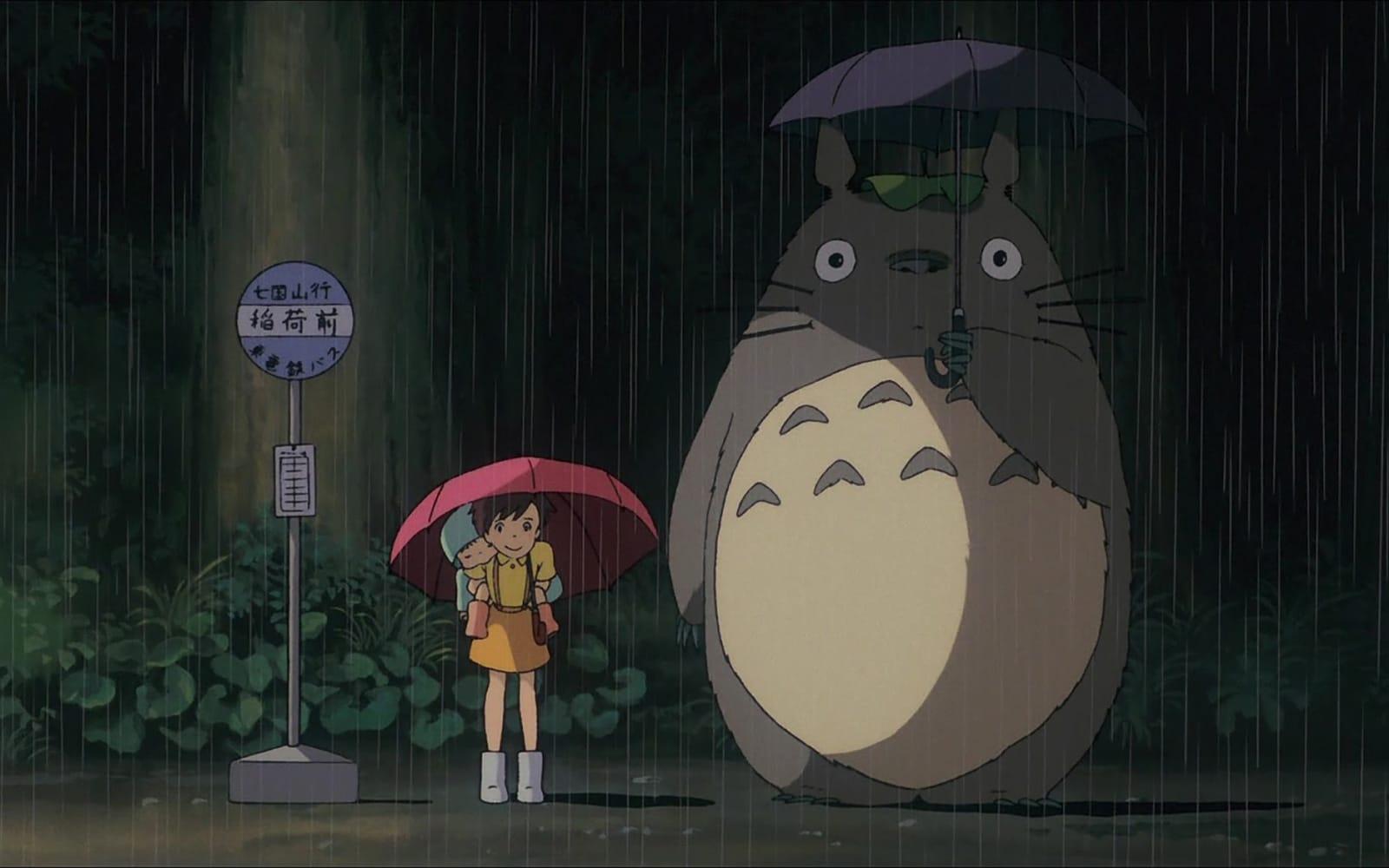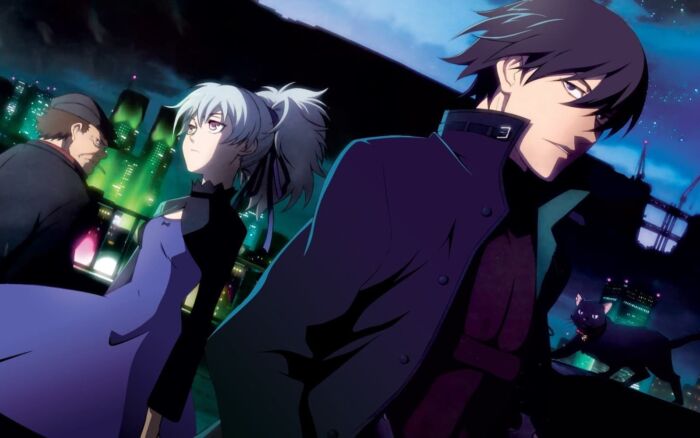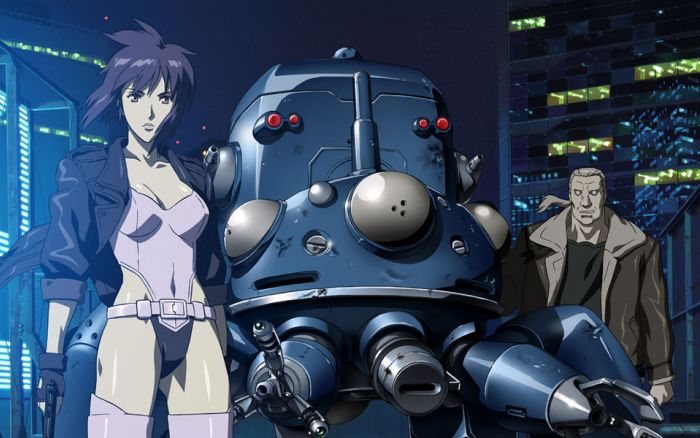An Anime Primer, #4: Darker Than Black, My Neighbor Totoro, Ghost in the Shell: SAC

Darker Than Black by Tensai Okamura

The premise of Darker than Black sounds like a combination of X-Men and Stalker, Andrei Tarkovsky’s 1979 Russian sci-fi film: Ten years before the series’ start, the mysterious “Hell’s Gate” descended on Tokyo, changing the patterns of the stars above the city and transforming those caught within the Gate’s zone into “Contractors,” humans with miraculous, mutant-like powers. Unlike X-Men, however, Contractors must pay a price whenever they use their powers. For example, Jean can teleport matter, but must obsessively arrange small objects into straight lines after he does.
Darker than Black’s protagonist is a Contractor named Hei, also known as the Black Reaper, who can manipulate electricity and alter objects at the molecular level. Unlike the rest of the Contractors, Hei can exercise his abilities without paying a price (how and why he can do so is one of the show’s central mysteries, and the payoff does not disappoint). While Hei is the main character, Darker than Black also features a large suppprting cast, sometimes devoting entire episodes to peripheral storylines, such as when we follow Gai Kurasawa, a bumbling, Columbo-esque private eye, on his investigations. The Kurasawa episodes are much lighter in tone and more humorous than the rest of the series, which, as its title implies, tends to be rather grim.
The world of Darker than Black expands and deepens with nearly every episode, introducing new characters and storylines at a pace that can be difficult to keep up with, so you might need to consult a wiki or character list in order to keep everything straight. Sticking with the series is worth the effort, though. It ties its disparate threads together as it progresses, building to one of the most satisfying (and coherent) climaxes I’ve enjoyed in an anime series. — Tyler J. Petty
Note: Darker than Black is currently streaming on Hulu and Netflix.
My Neighbor Totoro by Hayao Miyazaki

Recently, I was presented with a film-viewing conflict: keep my eyes trained on the adventures of Satsuki, Mei, and their neighbor Totoro, or observe my son Camden’s moment-by-moment responses to Hayao Miyazaki’s animated classic. If you’re a parent, you know this wasn’t much of a conflict: I chose the latter, and found my viewing experience of My Neighbor Totoro the richer for it. Not quite Mei’s age, Cam deemed the lovable Totoro — whose roars evoked some startled flinching — a “little scary.” But the two young sisters — particularly the toddler, Mei — became something like filmic playmates. I’ve often noticed that when Cam and my four-year-old niece play together, one will laugh at something inconsequential and the other will almost inevitably join in without knowing the object of humor. Laughter for these young ones is contagious. Mei and Satsuki exhibit this sort of playful laughter in a way that is remarkably resonant. Camden laughed with them almost on cue; my wife, Eliza, and I glanced at each other and smiled.
I can’t think of much that Cam loves more than “mighty machines” and the neighborhood cat, “Puzzle,” who greets us when we arrive home. So you can imagine how fascinated he was by the Catbus. A bus-shaped cat who flies like the toy busses Cam sends into the air is just the sort of combination of sound, color, and movement to compel my son into flights of delight. But watching My Neighbor Totoro — while certainly one of Ghibli’s most child-friendly offerings — was not merely an exercise in parental responsibility for Eliza and me. When Catbus rescues Mei and then swoops the sisters over to the hospital to see their sick mother Yasuko, we’re reminded that there’s nothing insignificant or immature about the film’s stakes. Eliza and I are invested in the conflict’s content; Cam recognizes the film’s tonal shifts — “What’s wrong?” he asks at just the right moments.
But the Catbus delivers all of us — Satsuki, Mei, Cam, Eliza, and me — to some good news: Yasuko is in good spirits, and she is going to be okay after all. And that, I suppose, is a clue as to why you should care about anime and its potential for goodness: the sense in which to be “animated” is to be healthful. Spirited, even. Studio Ghibli, in particular, knows how to draw up vibrant tales which sweep you up in its spiritual winds. I could see it on my son’s face: the Catbus animates. — Nick Olson
Ghost in the Shell: Stand Alone Complex by Kenji Kamiyama

When discussing “intellectual” anime, it’s a given that the Ghost in the Shell franchise will be mentioned at least once. Much of that is due to Mamoru Oshii’s influential movies (the first Ghost in the Shell was one of the primary inspirations for the Matrix movies). However, Kenji Kamiyama’s Stand Alone Complex television seres is certainly no slouch. Though less philosophical than Oshii’s movies, Stand Alone Complex still tackles some heady themes, e.g., political corruption, media manipulation, war crimes, immigration, terrorism — and of course, Ghost in the Shell’s pet theme: the demands that increasingly ubiquitous and conspicuous technology place on our humanity.
Stand Alone Complex focuses on Public Security Section 9, an elite group of government agents led by the cybernetically enhanced Major Motoko Kusanagi. Tasked with solving high-tech and extremely sensitive crimes, Kusanagi and her comrades tackle all manner of criminals, from corrupt politicians and police officials to a J. D. Salinger-loving master hacker who can apparently hijack people’s computer-enhanced brains. Like any police procedural, the series can be occasionally slow-moving, but the ethical and philosophical questions it raises are fascinating — especially when a charming subplot concerning artificial intelligence emerges. And as is the case with any show concerning government conspiracies, there are plenty of plot twists across the series’ 26 episodes.
But if heady dialog about cyber-terrorism and brain hacking isn’t exactly your cup of tea, the series contains plenty of solid action sequences made all the more involving thanks to Production I.G’s topnotch animation and Yoko Kanno’s always-brilliant music.